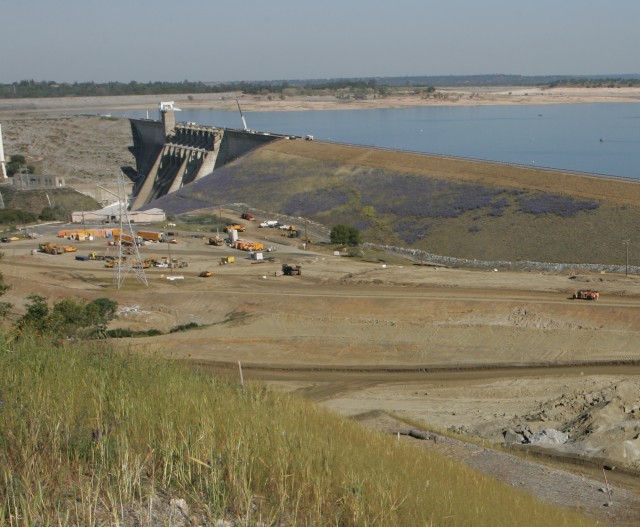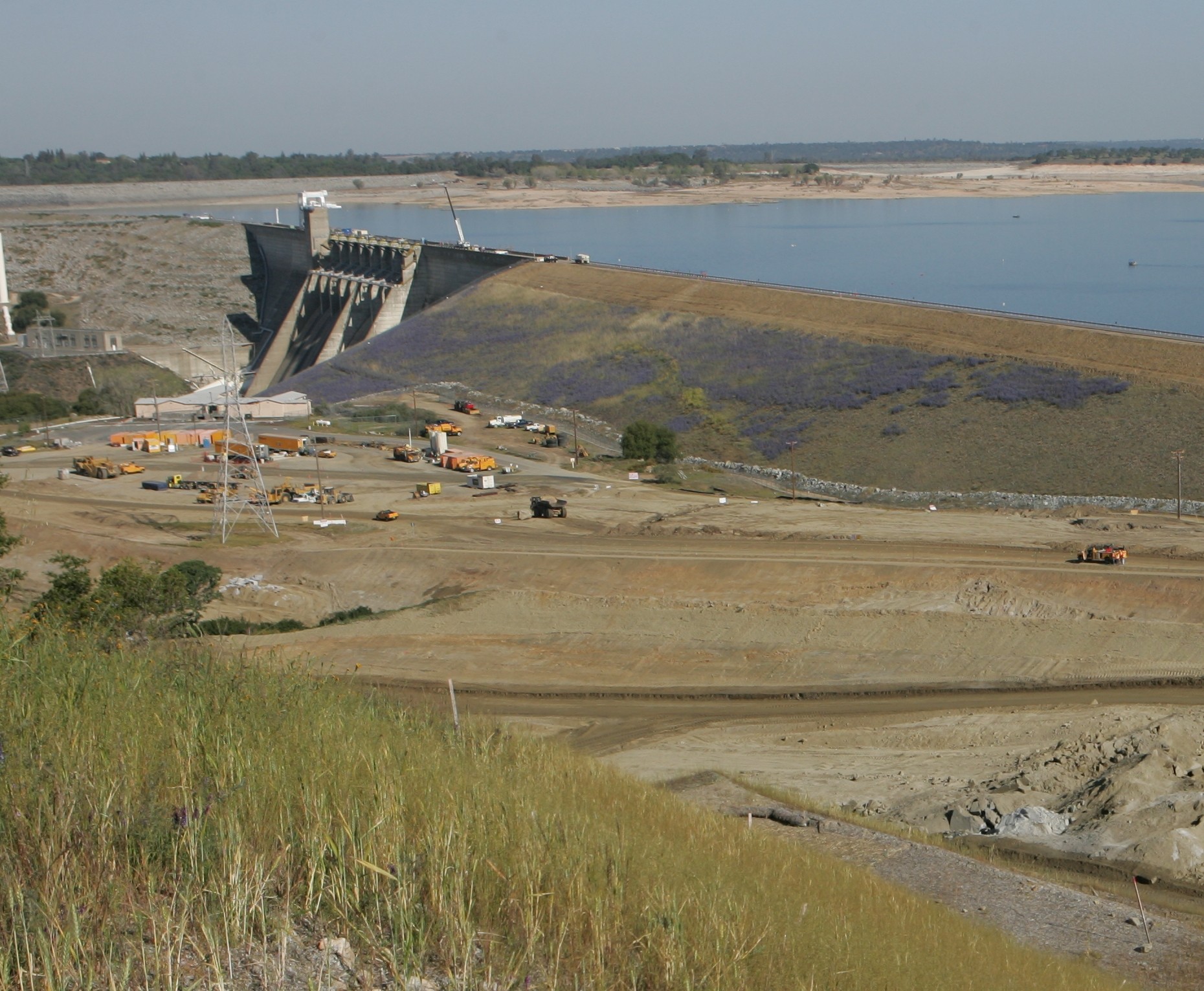
FOLSOM, Calif. -- The U.S. Army Corps of Engineers and U.S. Bureau of Reclamation are teaming up on a project aimed at greatly reducing the risk of a catastrophic flood in the Sacramento region. The combined effort looks to not only reduce the risk, but the time necessary to complete the project, aiming to provide Sacramento with near 200-year level flood protection by 2016.
A cooperative effort between the Army Corps of Engineers' Sacramento District, U.S. Bureau of Reclamation, the state of California Central Valley Flood Protection Board, and the Sacramento Area Flood Protection Agency (SAFCA), the $977-million Joint Federal Project (JFP) is designed to shave five years and approximately $1 billion off the project compared to performing separate projects to achieve the same results.
Following Hurricane Katrina, eyes turned to Sacramento as a potential high flood risk. Currently, most of the greater Sacramento area has at most 100-year level flood protection, meaning there is a one-in-100 chance of flooding each year. As a result, many scientists and engineers quickly declared that Sacramento was the number one city in the nation in danger of facing the same fate as New Orleans, leading state and local officials to place a greater emphasis on what could be done to hasten a solution.
The Corps and its partners are working to significantly increase flood protection in the Sacramento region with the JFP, an additional feature at Folsom Dam that will help reduce flood risk. The project is highlighted by a spillway at the dam and reservoir, located downstream from the confluence of the north and south forks of the American River. Folsom Dam is located in Folsom, Calif., about 20 miles northeast of Sacramento.
The JFP will create another outlet for water to quickly be released from Folsom Lake. The project will see a 1,100-foot approach channel constructed that will filter the water from the lake into the spillway; a control structure with six submerged gates that will be controlled in coordination with the gates on the dam to control water releases; a 3,000-foot long spillway chute that will work like a large slide for the water from the top of the dam down to the American River below; and a stilling basin that will slow the racing water back to normal flow levels that the levees will be able to withstand. The entire spillway structure will operate in conjunction with the existing operations of the Folsom Dam and is not intended to replace any of the dam's current functions.
Currently, the JFP is in the second phase of excavating more than 3.5 million cubic yards of rock and soil on land parallel to Folsom Lake Crossing that will become an auxiliary spillway for the dam. Reclamation is performing the first two phases of the project before the Corps of Engineers begins work on its portion of the project beginning with the control structure and its six gates in the fall of 2010.
With so many parts, it can be difficult to bring it all together.
"One thing that makes this type of partnership difficult is that there are very few models for a joint Corps of Engineers, Bureau of Reclamation construction project," said Larry Hobbs, Reclamation's Mid-Pacific Region dam safety project manager. "Each agency has a specific mission and procedures that don't always align with each other. Our challenge is to address these differences collaboratively in order to complete the project."
The Bureau of Reclamation has responsibility for the water delivery and the Folsom Dam facility, while the Corps of Engineers is responsible for flood damage reduction, which mostly involves the levees downstream because they are often the last level of protection for the communities behind them. With the JFP, the needs of both the dam facility and the levees have to be met for the upgrades to be effective. Other projects, including additional Reclamation projects at Folsom Dam and the Corps' American River Common Features and Folsom Dam Raise projects - which will strengthen the levees along the American River and raise the dam three feet to reduce the risk of overtopping - aim to improve structures at the main dam as well as downstream of Folsom Lake to ensure both sets of improvements work cooperatively.
That makes teamwork between the two agencies vital. The communication and coordination developed between the agencies during the construction of the Folsom Lake Crossing bridge provided a significant amount of help when it came to the JFP. Earlier this year, the Corps and the Reclamation worked with the state of California, the city of Folsom and SAFCA to complete the bridge, which replaced a major commuter thoroughfare closed following the terrorist attacks of Sept. 11. The bridge was completed in just about five years, about half the length of the typical civil works project.
"There were a lot of lessons learned from the bridge project that significantly improved our ability to coordinate with one another on the JFP," Hobbs said.
David McDaniel, Corps of Engineers project manager, agrees with Hobbs. "On both projects, the Bureau was and has been of great assistance with the logistics. They processed the required security investigations for contractors and facility staff and obtained required permits and rights of entry."
With the experience from working on the Folsom Lake Crossing, the Corps, Reclamation and its partners expect to complete work on the JFP sooner rather than later.
"We're currently ahead of schedule and fully expect to have phase two completed by next fall," Hobbs said.

Social Sharing